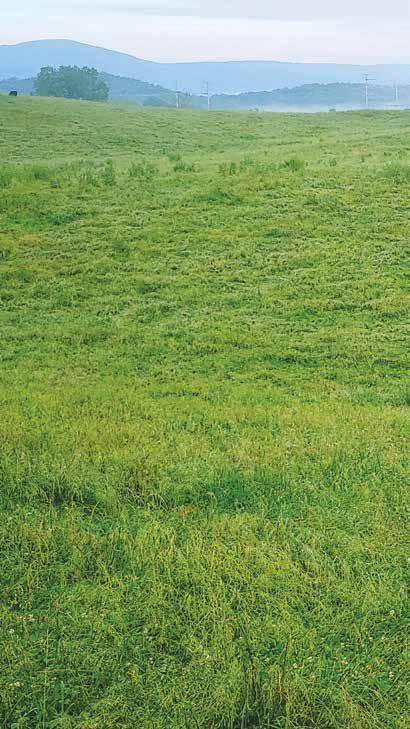
11 minute read
ON THE WIRE
Western Bird Die-Offs Raise Alarm
Experts estimate that this summer, hundreds of thousands of birds may have suddenly died across New Mexico, Colorado, Arizona, and Texas, most of them migratory species such as swallows, warblers, and flycatchers.
A record cold snap that started September 9 likely caused the majority of these deaths. While birds usually tolerate cold weather (feathers are excellent insulation, after all), cold leads to declines in insects and food shortages for insectivorous bird species. While sudden cold fronts have killed migratory birds before, scientists are concerned about the scale of this event, and they wonder if other factors might be in play. For example, before the cold snap, as early as August 20, unusually high numbers of dead birds were already turning up in parts of southern New Mexico.
“The drivers behind these earlier events are less clear,” writes ABC’s Director of Threatened Species Outreach John C. Mittermeier in an article posted on ABC’s website. “They could be related to local factors, or to the severe drought in the southwestern United States and the extensive wildfires across Oregon and California.” Forensic analyses of bird specimens may reveal if smoke inhalation from fires played a role.
The severity of wildfires and droughts in the western U.S. have been exacerbated by climate change, and it may have played a role in increasing the impact of this year’s events. “Migratory birds traveling across the western U.S. this September faced record-breaking wildfires at the same time as the most severe drought in 1,200 years, at the same time as the most severe cold snap in over a century,” Mittermeier adds. “Alone, each of these factors presents a challenge for migrating birds. Together, it is easy to see how their impact could be particularly deadly.”
Mittermeier also wonders how the bird deaths this summer might impact bird populations. “Research shows that die-offs of birds due to sudden weather events can lead to 25- to 90-percent declines in the number of breeding individuals the following year, and local populations can take up to seven years to recover from these events,” he writes. “If those populations are already declining due to habitat destruction, agricultural intensification, and increased pesticide use (as we know they are) and are already stressed by climate change-related events such as droughts and fires, we can only imagine that those recoveries will be slower, if they happen at all.”


Species with healthy populations are resilient to events such as this summer’s sudden cold snap, and there are clear steps that we can take to help birds maintain their populations. Fortunately, most of the birds found during the die-off are still widespread, generally common species. ABC continues to lead efforts to stop the declines in bird populations and to ensure that our birds are more resilient to climate change and weather events.
To find out more about ways to help, visit: bit.ly/ HelpReverseBirdDeclines
Read John’s full article about the fall 2020 bird die-offs: bit.ly/ WesternBirdDieOff
LEFT: Townsend's Warbler by John C. Mittermeier TOP: Violet-green Swallow by Feng Yu, Shutterstock
Wedge-tailed Shearwaters Make Historic Return to Moloka‘i Site
The return of Wedge-tailed Shearwaters provides the latest evidence of success in a bold effort by the Moloka‘i Land Trust and ABC to bring back nesting seabirds to 90 acres of remote coastal habitat on the Hawaiian island of Moloka‘i’s north shore. The shearwaters, which historically nested there, were found breeding at the site for the first time in recent history in August. Signs of shearwater burrow excavation were found in three different areas, and included five active nests. Two chicks were found in nests.
Key in efforts to protect the area, called the Mokio-Anapuka Restoration Site, will be the construction of a predator-proof fence. “Burrowing seabirds like Wedge-tailed Shearwaters are a critical part of restoring this site,” says Brad Keitt, Director of ABC’s Oceans and Islands program. “Once the predator-proof fence is complete, it will be safe for burrowing seabirds to return in force.” The enclosing barrier will allow seabirds such as the Laysan Albatross, Wedge-tailed Shearwater, and other species to colonize the site, free from the leading cause of seabird declines — introduced, invasive predators such as rats, mongooses, and cats. A temporary fence to keep out deer allowed for successful native plant restoration over the majority of the site.
Acoustic monitoring systems, called song meters, were set up in 2016 to determine if nocturnal seabirds were present. “There had been a few detections of Wedgetailed Shearwaters on song meters, suggesting they were in the area, but no successful nesting until now. This is a direct benefit of protecting the site,” says Hannah Nevins, ABC’s Seabird Program Director. “This great news lends more urgency to getting the fence built as soon as possible.”
“Mokio is a special place, and it has been phenomenal to see the transformation from a degraded area, dominated by nonnative Kiawe (a tropical mesquite tree) to primarily native coastal strand habitat with blooming native species carpeting the ground,” says Butch Haase, Executive Director of Moloka‘i Land Trust, who has been leading the effort to protect this site since 2010.
The successes at the Mokio site are the result of a partnership among ABC, Moloka‘i Land Trust, the Maui Nui Endangered Seabird Recovery Project, U.S. Fish and Wildlife Service, U.S. Geological Survey, and the Hawai‘i State Department of Land and Natural Resources, MauiNui Native Ecosystem Protection and Management team.
ABC is grateful to the following supporters for making this project possible: U.S. Fish and Wildlife Service Coastal Program, Science Applications Program, and the Partners Program; the David and Lucile Packard Foundation; Lynn and Stuart White; the BAND Foundation; and the Sacharuna Foundation.
The Mokio-Anapuka Restoration Site, where a predator-proof fence to protect nesting seabirds is planned. Photo by Butch Haase, Moloka'i Land Trust One of two Wedge-tailed Shearwater chicks found at the Mokio-Anapuka Restoration Site. Photo by Butch Haase, Moloka'i Land Trust
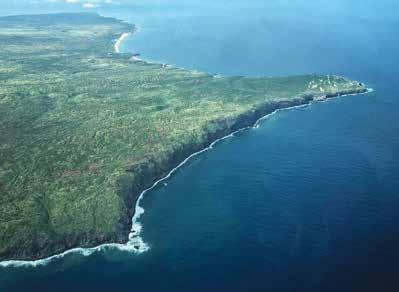

Record Fire Season Takes Toll on Birds
More than 5 million acres burned in California, Oregon, and Washington in 2020. Dozens of people died, tens of thousands were displaced, and thousands of buildings burned. The many record-breaking blazes and widespread smoke and haze also took a toll on birds.
For example, nine California Condors went missing and two chicks died in a sanctuary in Big Sur when the Dolan Fire ripped through. In Washington State, the Pearl Hill Fire destroyed at least half of the Greater Sage-Grouse leks in a stronghold in Douglas County, perhaps claiming as much as 70 percent of the population there. It likely wiped out a reintroduced sage-grouse population in Lincoln County as well. Off Oregon’s coast, haze from fires may be responsible for disoriented stormpetrels colliding with boats. And the crops, often as a seed coating, has long been suspected to affect bird region’s fires may have contributed to mass bird deaths that occurred during fall migration (see p. 6). While wildlife has adapted to fire as part of natural cycles in many western habitats, scientists worry that climate change makes these events both more frequent and more damaging. When the smoke clears and biologists and birders can get back out to survey local bird populations, it will be important to determine if the damage wrought by this recordbreaking year changed the long-term status of any bird populations.
Fires also raged elsewhere, including in Brazil, where an estimated 16 percent of the world’s largest expanse of tropical wetlands, the Pantanal, was consumed. For a second year, fires also threatened habitat for the recently rediscovered Kaempfer’s Woodpecker, an ABC priority species in the Cantão region of Brazil. This populations. Prior studies revealed neonics’ persistence in the environment and their toxicity to non-target invertebrates. Now a recent study directly links their presence to bird declines. Published in the online journal Nature Sustainability in August, the study linked neonics’ expanded use to a decline in U.S. breeding bird diversity between 2008 and 2014, when compared with areas where neonics were not used. Particularly hard hit were grassland
Kaempfer's Woodpecker by Tulio Dornas

was by far the worst fire season in living memory in this region. ABC partner Instituto Araguaia led efforts, with ABC and Global Wildlife Conservation support, to put out four separate fires. Fortunately, the vegetation that burned is among the most fire resilient in the region, and Instituto Araguaia successfully prevented the fire from entering areas of
New Study Links Increased Neonic Use with Bird Declines
The widespread use of neonicotinoid (neonic) insecticides, now applied to many
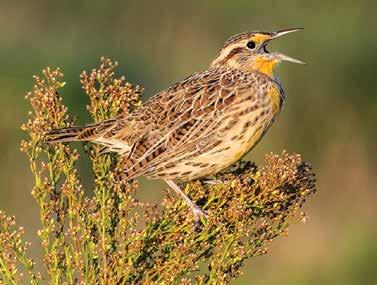
mature forest in their reserves. and insectivorous birds, whose diversity dipped 4 and 3 percent, respectively. The authors propose that neonics may affect birds directly via coated seeds and indirectly by sharply cutting back insect prey and “by decimating the population of birds that can reproduce in the future.” When this last impact was considered, the researchers boosted the average annual effect of neonics on grassland birds to 12 percent, and 5 percent for insectivorous birds. They added: “This research provides compelling support for the re-evaluation of policies permitting the use of neonicotinoids by the U.S. Environmental Protection Agency, particularly around bird habitats.”
With Help, Nuthatch Returns to Missouri
Over the past few centuries, fire suppression and overharvesting greatly reduced Missouri’s open pine and mixed-pine woodlands. As these habitats dwindled, the Brown-headed Nuthatch, Red-cockaded Woodpecker, and other pine-specialist species vanished from the state.
In August and September, however, 46 Brown-headed Nuthatches found their way back — flown in on a Missouri Department of Conservation plane from neighboring Arkansas and released into Missouri’s Mark Twain National Forest. The translocation was necessary because pine woodlands are not continuous from Arkansas to Missouri and because the nuthatches are nonmigratory. Within the national forest, years of habitat restoration laid the groundwork described as a new species in 2018,
Brown-headed Nuthatch by Matt Cuda, Shutterstock
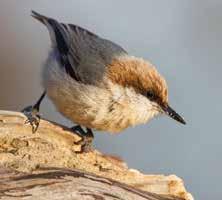
for what will hopefully become a new breeding population there.
Under the U.S. Forest Service’s Collaborative Forest Landscape Restoration Program, ten years of funding was awarded to the Mark Twain National Forest in 2012. To help build a coalition, ABC and the Central Hardwoods Joint Venture now has its first area of protected habitat thanks to Fundación de Conservación Jocotoco’s purchase of 110 acres of land in Ecuador. The Cerro de Arcos Reserve was established in August with support from ABC and Rainforest Trust. Currently known from just one mountain range, the hillstar likely warrants listing as Critically Endangered, but has yet to be formally evaluated for conservation status. “With a small population likely between 250 and 750 individuals, and its habitat threatened by burning for pastureland and conversion to exotic pine forests, the time to protect this bird is now,” says Martin Schaefer, Jocotoco’s Executive Director. (CHJV) helped bring together key partners, including federal, state, and nongovernmental organizations and agencies that formally agreed to work together to restore pine woods in the same large landscape, the Current River Hills, which is also designated an ABC BirdScape. Today, around 100,000 acres of Shortleaf Pine and pine-oak woodland has been or is being restored, including crucial habitat for the newly released nuthatches.
In addition to ABC and CHJV, partners in the restoration and nuthatch translocation include the USDA Forest Service’s Northern Research Station, the Missouri Department of Conservation, the University of Missouri, and Tall Timbers Research
Recently Named Hillstar Gets New Reserve
The recently named Bluethroated Hillstar, a hummingbird discovered in 2017 and
Blue-throated Hillstar by Roger Ahlman
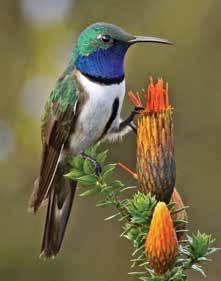
Station. ABC has been working to promote the hummingbird’s conservation since its discovery. “For underprotected birds like the Blue-throated Hillstar, this land protection is a crucial first step,” says Daniel J. Lebbin, ABC Vice President of Threatened Species.
The project is a joint effort by Jocotoco, Rainforest Trust, and ABC, and aims to protect at least 616 acres of the bird’s alpine meadow, or páramo, habitat by the middle of 2021, with an ultimate goal of 1,235 total acres.
ABC gratefully acknowledges the following supporters for making this ongoing project possible: David and Patricia Davidson, the estate of Mary Janvrin, Mark Greenfield, and Marge Duncan.
Birds
provide comfort, beauty, awe, and much more. From shimmering hummingbirds to diving falcons, birds connect us to nature, and to each other. Their presence, song, and flight inspire us to hope for a brighter future.
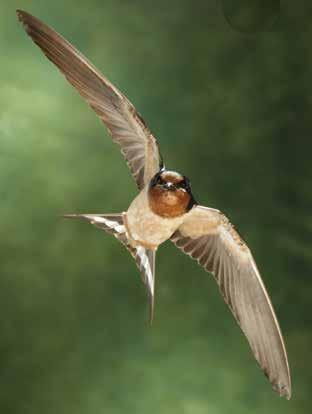
Our love for birds is endless. But the time we have left to conserve them is not. In our backyards, forests, and prairies, and along mountain ranges and coastlines, there is an urgent need to better conserve the birds we care about before they vanish forever.
We’ve already lost 3 billion birds within one human lifetime. We cannot allow birds we know and love — widespread species such as Barn Swallows and increasingly scarce beauties such as Cerulean Warblers — to meet the same fate as the Carolina Parakeet, Labrador Duck and other birds lost to extinction.
That’s where you come in. Will you step up to a 1:1 match to help ABC raise $1 million by December 31?
Thanks to several generous donors, we already anticipate raising $500,000 by December 31. Please contribute to our $1 million match today!
Barn Swallow in flight by Joe McDonald, Shutterstock RIGHT: Barn Swallows by Harry Collins Photography, Shutterstock
Together, we are a powerful force for birds, for our Earth, and for future generations.
TOGETHER



